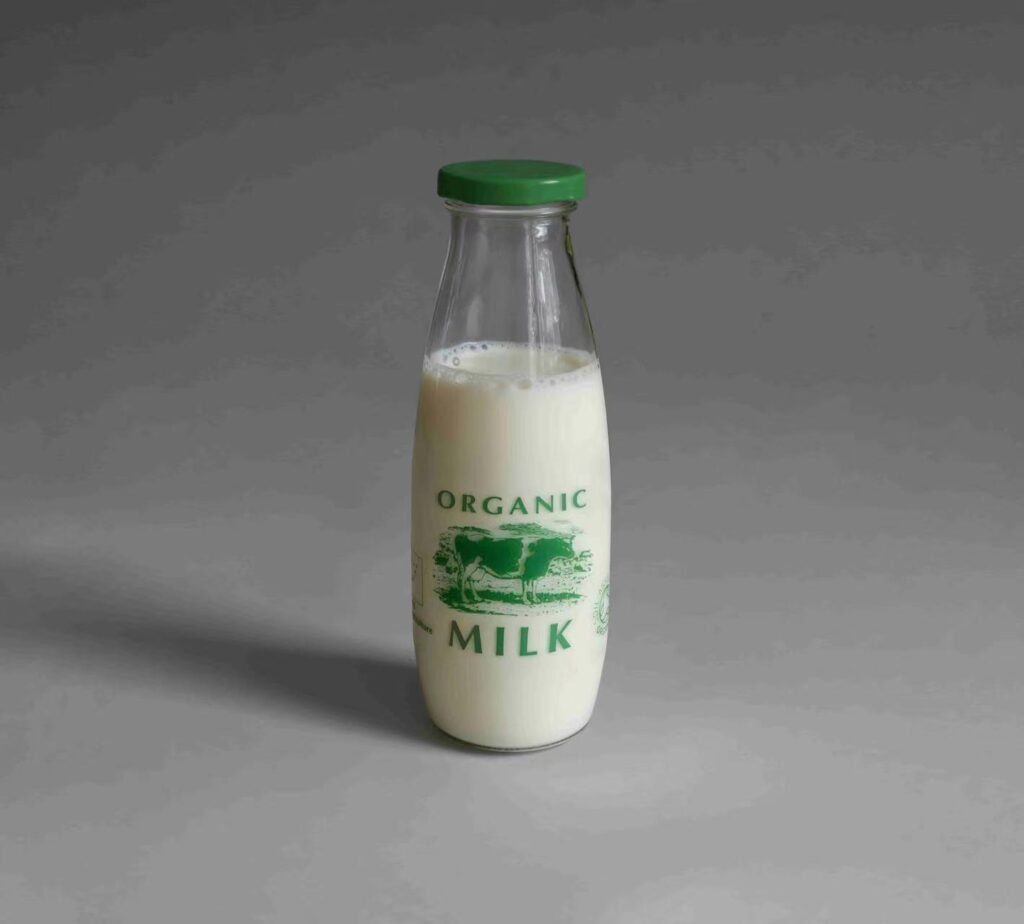In today’s health-conscious society, individuals are constantly navigating the complexities of making healthier lifestyle choices. Particularly when it comes to their diet. This journey often leads them to a pivotal decision point in the dairy section of their local supermarket: the choice between organic milk and its conventional counterpart. With a bewildering array of dairy products lining the shelves, from low-fat and skim options to lactose-free and fortified varieties, consumers can easily feel overwhelmed. This blog is designed as a beacon of clarity in the murky waters of milk selection. By delving into the nuances that distinguish organic milk from regular milk, we aim to arm you with the knowledge necessary to make choices that align with your health objectives and ethical values.
Table of Contents
ToggleCONTENTS LIST

Section 1 What is Organic Milk
1.1 What Makes Milk Organic?
Organic milk stands apart, derived from cows nurtured under the stringent criteria of organic farming standards. These regulations champion a return to naturalistic living conditions, dietary habits, and farming methodologies, all aimed at fostering a more ethical and sustainable approach to dairy farming:
○ Feed Quality: The journey to organic milk begins with the diet of the cows. Exclusively fed on pastures and feed that’s free from synthetic fertilizers, pesticides, or genetically modified organisms (GMOs), these cows feast on a cleaner, more natural diet. This commitment ensures that the milk they produce is free from unwanted chemicals and closer to its natural state.
○ No Antibiotics or Hormones: A cornerstone of organic integrity is the prohibition of antibiotics and growth hormones in cattle rearing. This policy not only ensures the health and natural growth of the cows. But also means the milk is free from antibiotic residues and artificial influences on hormone levels.
○ Ethical Grazing Practices: Organic certification mandates that cows have access to pasture during the grazing months. This practice supports the physical and psychological well-being of the cows. And also allows them to roam, graze, and engage in natural behaviors. The result? Milk that’s not just a product of enhanced animal welfare. It boasts a richer nutritional profile, enriched by the diverse, grass-based diet of the cows.
1.2 Benefits of Organic Milk
○ Superior Nutritional Profile: Emerging research suggests that organic milk may boast a richer content of vital nutrients compared to conventional milk. Such as omega-3 fatty acids. This nutritional enhancement is attributed to the organic, grass-fed diet of the cows, offering a potent source of these beneficial fats.
○ A Win for the Environment: The organic farming ethos extends beyond the barn. Embracing practices that aim to protect and nourish the environment. By eschewing synthetic inputs and promoting biodiversity, organic dairy farming casts a lighter ecological footprint, contributing to the health of our planet.
○ Championing Animal Welfare: At the heart of organic milk production is a deep respect for the cows. The organic standards ensure that animals are treated with care, providing ample outdoor access and living conditions that respect their natural behaviors and needs. This humane approach not only elevates the quality of life for these animals. It also enriches the quality of the milk they produce.
In essence, the journey from pasture to pitcher for organic milk encapsulates a commitment to natural processes, environmental stewardship, and the ethical treatment of livestock, offering consumers a product that nourishes both the body and the soul.
Section 2 Regular Milk Explained
The production of regular milk involves processes and practices that may diverge significantly from the stringent guidelines followed in organic farming. Here’s an expanded insight into conventional milk production:
2.1 Production of Regular Milk
○ Feed: In the realm of conventional dairy farming, cows are typically fed a diet rich in grains. Which may include the use of genetically modified organisms (GMOs) or crops cultivated with synthetic fertilizers and pesticides. This approach to feeding is often driven by the goal of maximizing milk yield and operational efficiency.
○ Use of Antibiotics and Hormones: Conventional dairy farming practices permit the administration of antibiotics to manage illness and prevent disease spread among the herd. Additionally, hormones such as bovine somatotropin (BST) are sometimes employed to enhance milk production. It can ensure a steady supply to meet consumer demand.
○ Grazing: Unlike their organic counterparts, cows in conventional dairy farms may not have mandated access to pasture. The emphasis is often on optimizing space and resources. And lead to less time spent in natural grazing environments for the animals.
2.2 Considerations for Regular Milk
○ Cost: One of the most compelling aspects of regular milk is its affordability. The cost-effectiveness of conventional milk production methods translates into lower prices at the grocery store. Making it a popular choice among consumers with budget constraints.
○ Safety and Quality: Despite the variations in production and farming practices, it’s crucial to note that all milk available for purchase undergoes rigorous safety and quality checks. These measures ensure that regardless of whether milk is organic or conventional. It meets the necessary health standards for consumption.

This deeper exploration into the production of regular milk reveals the complexities behind the choices available to consumers. While price and accessibility favor conventional milk, understanding the differences in farming practices and their implications can help guide more informed decisions aligned with individual values and preferences.
Section 3 Glass Packaging for Milk Storage
When comparing organic and regular milk, it’s essential to consider factors like nutritional content, environmental impact, animal welfare, and cost. While organic milk offers benefits in terms of nutrient profile and sustainable practices, regular milk provides a more affordable option for many families.
The resurgence of glass milk bottles in recent years speaks volumes about the growing consumer desire for sustainability and quality in packaging. Unlike their plastic or carton counterparts, glass bottles offer a myriad of benefits that align with eco-friendly and health-conscious preferences. Glass is 100% recyclable and can be reused multiple times without loss in purity or quality, significantly reducing environmental impact. Moreover, glass packaging preserves the freshness of milk more effectively, preventing the leaching of chemicals into the liquid.
Selecting glass milk bottles for both organic and regular milk is a smart choice that benefits the environment, ensures product quality, and enhances consumer enjoyment. Whether you prioritize the ecological and health aspects of organic milk or the accessibility and familiarity of regular milk, glass packaging offers a universally beneficial solution.












